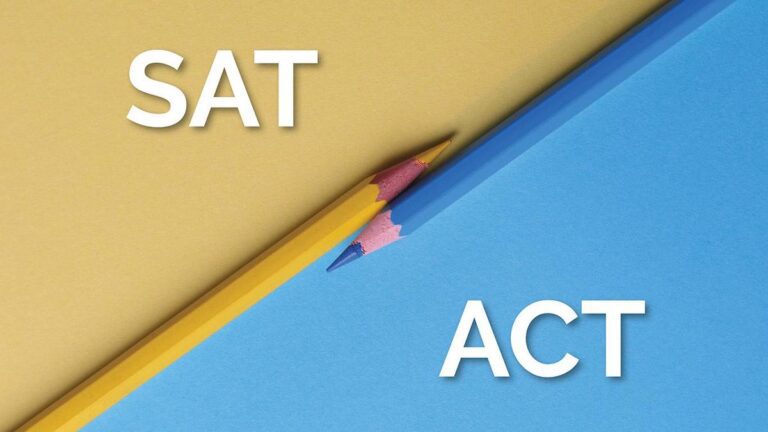Introduction
- Historical Context: Begin by providing a historical overview of the SAT and ACT’s role in college admissions. Detail the origins and purposes of these exams and how they became standard components of college applications.
- Pre-Pandemic Status Quo: Describe the situation before the pandemic, emphasizing the ubiquity of SAT and ACT requirements among colleges and universities.
The Pandemic’s Immediate Impact
- Challenges and Responses: Elaborate on the challenges the pandemic posed to traditional testing, including test cancellations and access issues. Discuss how institutions adapted by adopting test-optional policies.
- Initial Outcomes: Briefly analyze the immediate effects of these policy changes on college admissions, including changes in application numbers and demographic impacts.
The Current State of College Admission Testing
- The Shift to Online Testing: Provide details on the SAT’s transition to online testing, including technological and logistic considerations. Discuss the implications for students and educators.
- University Policies in Flux: Offer a comprehensive overview of how various institutions have responded, including those reinstating test requirements and those maintaining or adopting test-optional policies. Use specific examples to illustrate these trends.
- Rationale Behind Policy Changes: Delve into the reasons institutions give for their current testing policies, focusing on equity, transparency, and the predictive value of standardized tests. Include critiques and support from educational experts.
Case Studies
- Institutional Examples: Present detailed case studies of specific universities (e.g., Dartmouth, Yale, MIT, Purdue, Georgetown, Georgia Tech, University of Michigan, University of California system). For each, discuss:
- The specific testing policy adopted
- The rationale provided by the institution
- The expected impact on future applicants
- Student Perspectives: Incorporate testimonials or hypothetical scenarios reflecting diverse student experiences and viewpoints regarding these changing requirements.
The Debate: Equity and Accessibility
- Arguments for and against Standardized Testing: Examine the debate surrounding the fairness, necessity, and impact of standardized tests on college admissions. Discuss the role of tests in addressing or exacerbating educational inequalities.
- Alternative Assessments: Explore alternative methods of assessing college readiness, such as portfolios, interviews, and grade point averages. Consider how these might complement or replace standardized tests.
Looking Ahead: The Future of College Admission Testing
- Emerging Trends: Analyze current trends and predict future directions in college admission testing. Consider technological advancements, evolving educational philosophies, and societal pressures.
- The Role of Standardized Tests: Speculate on the role that standardized tests like the SAT and ACT will play in future admissions processes. Discuss potential reforms or overhauls to the testing and admissions landscape.
Conclusion
- Summarize Key Points: Briefly recap the major changes and ongoing debates in college admission testing.
- Call to Action: Encourage stakeholders, including students, educators, and policymakers, to engage in the conversation about making college admissions more equitable and reflective of a student’s potential.
Appendix
- Resources for Students: Provide a list of resources for students navigating the changing landscape of college admissions, including test preparation tips and advice on choosing colleges based on their testing policies.
References
- Cite Sources: Ensure to include a comprehensive list of references, including studies, policy announcements, and expert opinions used throughout the article.
Frequently Asked Questions: Is the ACT Test Required for College?
Is the ACT test required for all or most colleges?
+
No, the ACT test is **not required** by all colleges. In recent years, there has been a significant trend towards colleges adopting test-optional or test-blind admissions policies.
- **Test-Optional:** Colleges allow applicants to choose whether or not to submit ACT (or SAT) scores.
- **Test-Blind (or Test-Free):** Colleges will not consider ACT ( or SAT) scores at all, even if submitted.
Why have many colleges stopped requiring the ACT (and SAT)?
+
Colleges have moved away from test requirements for various reasons, including:
- **Promoting Equity and Access:** Recognizing that test scores can be influenced by socioeconomic factors and may not be the best predictor of college success.
- **Holistic Review:** Preferring to evaluate applicants based on a broader range of factors like high school grades, essays, extracurricular activities, and recommendations.
- **Reducing Stress:** Alleviating some of the pressure associated with standardized testing for students.
Is the ACT Writing Test required by colleges?
+
The ACT Writing Test (optional essay section) is **very rarely required** by colleges anymore. Most colleges that still consider ACT scores only look at the composite score (based on English, Math, Reading, and Science). If you choose to take the ACT, you likely do not need to register for the Writing Test unless a specific college you are applying to explicitly requires it (which is uncommon).

